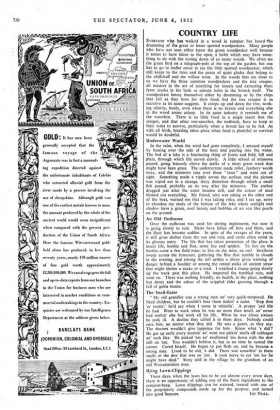COUNTRY LIFE
EVERYONE who had walked in a wood in summer has heard oihe drumming of the great or lesser spotted woodpeckers. Many people who have not seen either know the green woodpecker well because it seems to have taken to the open, a 'habit which may have some- thing to do with the cutting down of so many woods. We often see the green bird on .a telegraph-pole at the top of the garden, but one has to go to leafier cover to see the little spotted woodpecker, which still keeps to the trees and the peace of quiet glades that belong to the chiffchaff and the willow wren. In the woods that are close to us we have the three common woodpeckers and the tree creeper, all masters in the art of searching for insects and extracting them from cracks in the bark or minute holes in the branch itself. The woodpeckers betray themselves either by drumming or by the chips that fall as they bore for their food, but the tree creeper is as secretive as its name suggests. It creeps up and down the tree, work- ing silently, busily, even when there is no breeze and everything else in the wood seems asleep. In its quiet industry it reminds me of the waterhen. There is so little food in a single insect that the creeper, and that other tree-searcher, the nuthatch, have to keep at their tasks to survive, particularly when a brood has to be fed. As with all birds, breeding takes place when food is plentiful or survival would be doubtful.


































 Previous page
Previous page